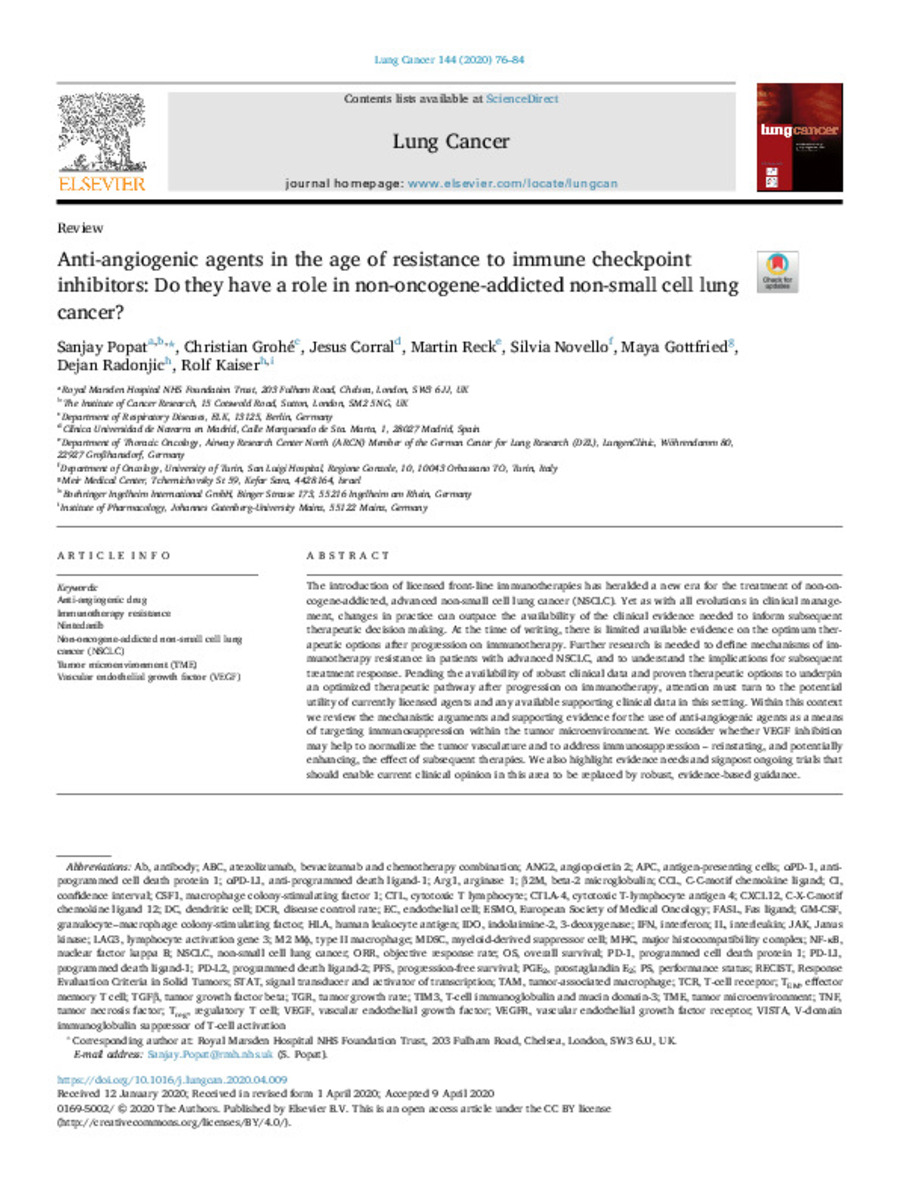Anti-angiogenic agents in the age of resistance to immune checkpoint inhibitors: Do they have a role in non-oncogene-addicted non-small cell lung cancer?
Keywords:
Anti-angiogenic drug
Immunotherapy resistance
Nintedanib
Non-oncogene-addicted non-small cell lung cancer (NSCLC)
Tumor microenvironment (TME)
Vascular endothelial growth factor (VEGF)
Note:
This is an open access article under the CC BY license
(http://creativecommons.org/licenses/BY/4.0/).
Citation:
Popat, S. (Sanjay); Grohé, C. (Christian); Corral, J. (J.); et al. "Anti-angiogenic agents in the age of resistance to immune checkpoint inhibitors: Do they have a role in non-oncogene-addicted non-small cell lung cancer?". Lung Cancer. 144, 2020, 76 - 84
Statistics and impact
0 citas en

0 citas en

Items in Dadun are protected by copyright, with all rights reserved, unless otherwise indicated.







